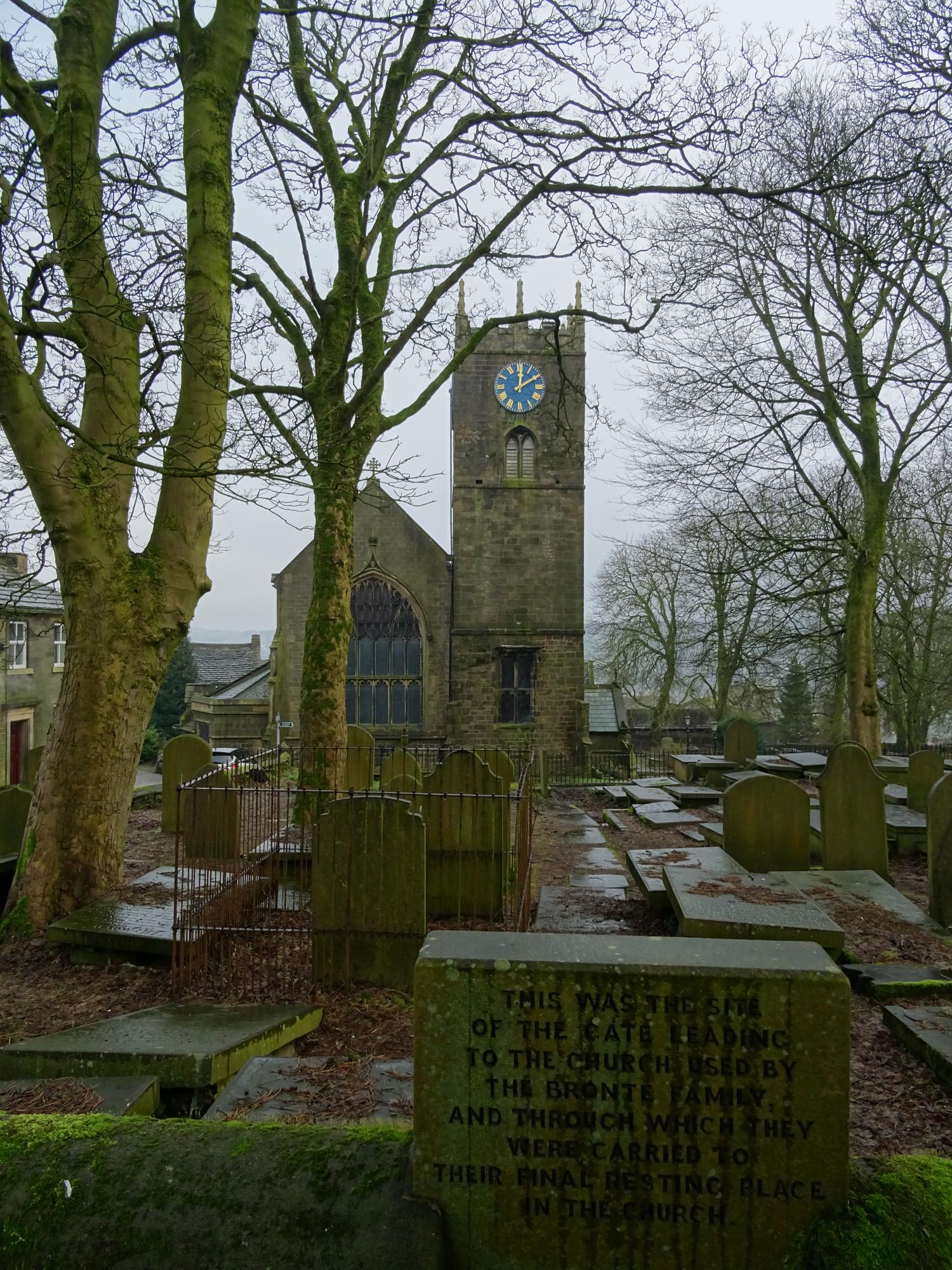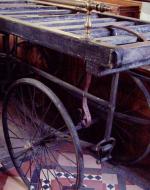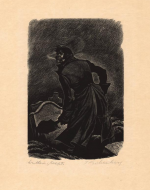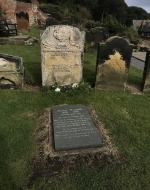Created by Emma Weitzman on Sat, 10/15/2022 - 14:14
Description:
Description: Death was a common part of life in the Victorian period. The Victorians had become used to losing loved ones of all ages, ranging from babies to grandparents. The Brontë family was no exception. The first member to die was their mother, Maria, due to sickness, shortly after giving birth to little Anne. Maria left behind her husband, Reverend Patrick Brontë, and their six children. The next to die was young Maria, the oldest child, at just the age of 11; she contracted tuberculosis at her school, and the second oldest, Elizabeth, lso returned home shortly after young Maria, only to die of the same sickness at age 10. The remaining Brontë children survived into adulthood, yet these traumatic experiences stayed with them. As their father was the town's reverend, the children were no strangers to funeral proceedings, and even growing up next to a graveyard, they saw death every day. Death was not only a part of their lives, but a large influence on their writing and world views.
Haworth Cemetery, Brontë Commemorative Tablet Haworth Church, Main Street, 2016, Wikipedia. All of the Brontë children died young; Branwell, Emily, and Anne succumbed to "consumption" (the nineteenth-century term for tuberculosis), all dying before they were 32. Many suspect the Haworth cemetery to be the culprit. Haworth, being a parsonage, was located directly next to the graveyard, contaminating nearly all of their drinking water as well as that of the townsfolk. Even Rev. Patrick Brontë suggested at one point that sanitation measures be taken. This contamination likely weakened the children's immune systems, leading them to catch diseases more frequently and have a more difficult time fighting them. Charlotte, who lived the longest of the siblings, had her death at 38 diagnosed as tuberculosis, but modern scientists found she died of a pregnancy illness, which was likely worsened by the water. Their home, which the sisters adored, ultimately led to their premature deaths. Currently, a recorded forty thousand people are buried in this cemetery, including all of the Brontë children, save for Anne, who is buried in Scarborough.
Brontë Family Vault, Memorial to Brontë in St Michael, Haworth, 2014, Wikipedia. Every member of the Brontë family, except for Anne, are buried in the Church of St Michael and All Angels, Haworth. Rev. Patrick Brontë, their father, had a total of six \children; the oldest two died as schoolgirls, leaving, in order, Charlotte, Branwell, Emily, and Anne. Branwell was the first to die of the remaining siblings; although he succumbed to tuberculosis, it is believed to have been worsened by his alcohol and opium addictions. His death affected the sisters gravely. The family attempted to ‘save’ Branwell in terms of physical health and morality, yet it proved to be in vain. Emily died a mere three months later, with Anne following Emily only five months after her. Emily, like Branwell, died of tuberculosis. Charlotte survived another five years. Patrick Brontë lived six years more than Charlotte, and he ultimately had to bury his entire family. The church was completely rebuilt in 1879 due to structural issues. Today, one can visit the church and view the plaque above where the Brontës lay, as well as the engraved pillar adjacent to the plaque, commemorating the burial of the members of this famous family.
Emily Brontë's Coffin, Victorian Bier, photographed by Trish Steel, 2007, Wikipedia. Out of the three surviving Brontë sisters, there is not nearly as much known of Emily and Anne as there is for Charlotte. Emily did not leave behind too much in terms of biography, but historians are able to piece together from other accounts a semblance of what she was like, although no one has been able to piece together their lives completely. Something that has been a large topic of discussion among these historians is the myth of Emily’s coffin; it is rumored the coffin measured only sixteen inches wide, making it one of the narrowest coffins made for an adult. This is thought to be due to her sickly condition upon her death, after suffering from tuberculosis for some time. In Emily’s day, people were generally smaller, and coffins were handcrafted, allowing for specifics such as this. Additionally, Victorians did not do viewings of the deceased like some faiths do today, meaning that the coffin would have been as tight of a fit as possible. There was no concern on how the dead looked postmortem, so corpses were packed into coffins as tightly as possible.
Fritz Eichenberg, "Heathcliff at Cathy's Grave," for Wuthering Heights (1847), by Emily Bronte, 1943 Random House edition. In Emily's novel Wuthering Heights, the character of Heathcliff is obsessed with the character Catherine, or "Cathy." After her death, Heathcliff cannot bear to be apart from her and digs her up from below ground, just to hold her close one final time. These are emotions that Emily felt in her own right, having lost so many loved ones in her life. In the Victorian Era, many dared not disturb the final resting place of the dead due to superstition. Within the novel, this act is frowned upon; would it had happened in real life, a person would have been faced with criminal consequences. Grave robbing was a real issue, combined with fears of haunting, which would have made this scene more than shocking to the Victorian reader. Emily, having grown up next to a graveyard, was no stranger to witnessing death. This may have dulled her reactions to graves and corpses, allowing her to write about them in such a graphic and invasive way. In Emily’s Wuthering Heights, Heathcliff digs Cathy up from the ground to see her again. Movie adaptations show her gracefully in a spacious coffin above ground, but truthfully, as written in this book, Cathy would have been buried as fast as possible, in a not-so-grandiose coffin. While Victorian class discrimination was real, death was the great equalizer, as showcased in Emily’s novel. Anne and Charlotte meditate on death within The Tenant of Wildfell Hall and Jane Eyre respectively, but do not depict such a controversial act as digging up a grave.
Anne Brontë's Grave, St Mary's Church, Scarborough, 2021, Wikipedia. Anne is the only Brontë child to not be buried in Haworth Cemetary. Serving as a governess, she spent time living in Scarborough with the Robinson family, leading to her love of the coastal area. Suffering from advanced consumption, she believed that the sea air would help her get better. Anne, accompanied by her sister Charlotte and friend Ellen Nussey, set out for the area. Emily, their other sister, died shortly before. During one of Anne's last nights alive, she enjoyed a vibrant sunset with the other two women. The next day, Sunday, she spent by the beach, passing away the following day in the afternoon. Her last words were “Take courage, Charlotte, take courage.” At the time, transporting a body would have been expensive and a health risk, leading to Anne being buried alone in the Scarborough Cemetary. Yet, it is also reported that she was buried in Scarborough at her own request; Anne didn't want to cause Charlotte the pain of transporting her body, or her father the pain of another loss of a child since Anne was the third Brontë sibling to die in less than nine months. Her grave faces the sea, a testament to one of the things that brought her joy in her life. Anne’s grave, being alone, is also a testament to how she is often regarded as the "forgotten" Brontë sister.






